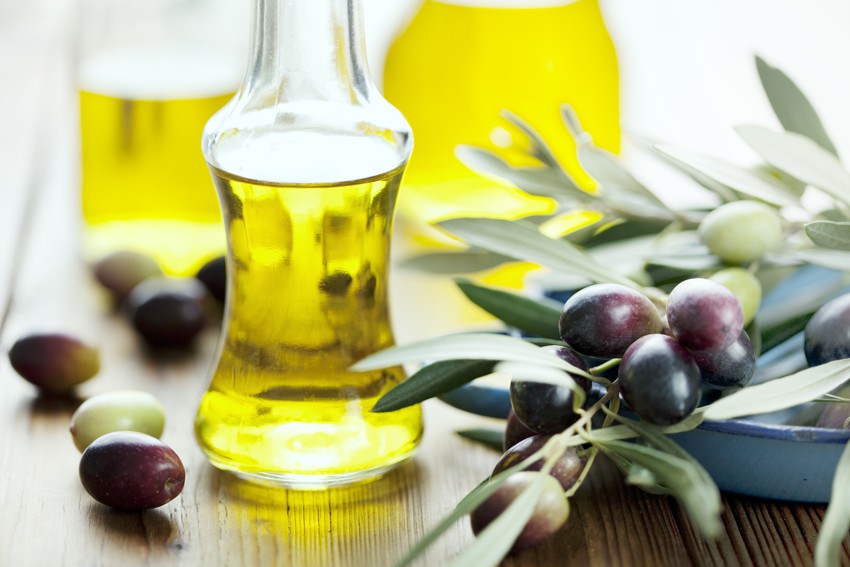Olive Oil and You

Pliny the Elder, way back, wisely advised not to use olives from a tree that has been licked by a female goat. To this day, to my knowledge, I never have.
Pliny the Elder, way back, wisely advised not to use olives from a tree that has been licked by a female goat. To this day, to my knowledge, I never have. The masters of the Ancient World were oblivious to the potential of petroleum, despite conquering every empire that had any, so they relied on olive oil for everything from cooking, lighting, heating and hair-conditioning to lubrication of their chariot wheels and orgies. Faithfully following a recipe chiselled in marble I once made an Ancient Roman cake from olive oil, polenta, honey, eggs and pine nuts. It emerged from the oven the shape and weight of a discus. It was intense in flavour and dense in texture but delicious with larks’ tongues and you can catch the crumbs in the lap of your toga while watching reruns of Spartacus. Australia took a while to wake up to what our Mediterranean mates had known since way back when. Then, in one generation, olive oil moved from the medicine cabinet to the designer kitchen and from Italian delis to supermarket shelves. The array of labels, however, can still appear daunting. How to choose? Look on the label for ‘Extra Virgin’ (silly, yes I know), ‘Product of Australia’, a year of production and awards no older than the oil itself. If the label doesn’t show the year the oil was pressed, check the best-before date which should be two years away, though even that is one too many for me. Buy two bottles – a robust oil for salads and drizzling and a milder one for cooking and whiting. The term ‘Light’ or ‘Lite’ on a label is as meaningless as the oil is tasteless. Buy from a specialist, ask his or her opinion and ultimately trust your own palate. There is nothing more personal than personal taste. Olive oil should be young, fresh, fruity, vibrant and peppery with a restrained bitterness. It may have a warm, even slightly hot, finish, but not harsh. Balance is all, and you will know when it is not there. Respected small-producer brands include Coriole, Kangaroo Island, Talinga Grove and Diana. Reliably fine supermarket oils from larger producers include Cobram Estate (purple label), Pendelton and Ollo. Olive oil is still a fat, albeit a benevolent one, so it doesn’t like light, heat or air. Oxidation and rancidity (the taste of a bad walnut) can be avoided by buying young oil, keeping it in a cool, dark place away from stoves or other hot spots and using it often. When dipping crusty bread, if you must involve balsamic vinegar serve it in a dish next to the olive oil but not in it, and dukka seems to have done its dash. I’m not mad about overly expensive, exquisitely packaged olive oils reserved for special occasions. Olive oil is meant to be used, consumed and splashed about, not dabbed behind the ears. Nor am I keen on olive oil sprays, flavour-infused oils (do that yourself) or tall skinny bottles that tumble like nine-pins each time you turn around wielding a ladle. Olive oil flavoured margarines contain 20 percent olive oil or less. Making your own 100 percent olive oil spread could not be simpler: • Pour a mild olive oil into a small glass container and seal it. • Place the container in the freezer for a few hours; the oil will freeze solid. • Transfer the container to the main section of the refrigerator. • The oil will soften to a spreadable texture. Add salt or herbs if you like. I don’t. To return to Pliny: “It is one of the properties of olive oil to impart warmth to the body, and to protect it against the action of cold; while at the same time it promotes coolness in the head when heated.” Translation: Olive oil is a seasoning for all seasons. In a previous lifetime Brian Miller was an olive oil importer but was reborn as an Australian olive oil judge. Recommended Reading Books Tree to Table – Cooking with Australian Olive Oil by Patrice Newell Extra Virginity: The Sublime and Scandalous World of Olive Oil by Tom Mueller The Natural History by Pliny the Elder – Book XV (79AD) Web SlickExtraVirgin aromadictionary.com/EVOO_blog Olive Oil Recipes australianextravirginoliveoil.com/recipes